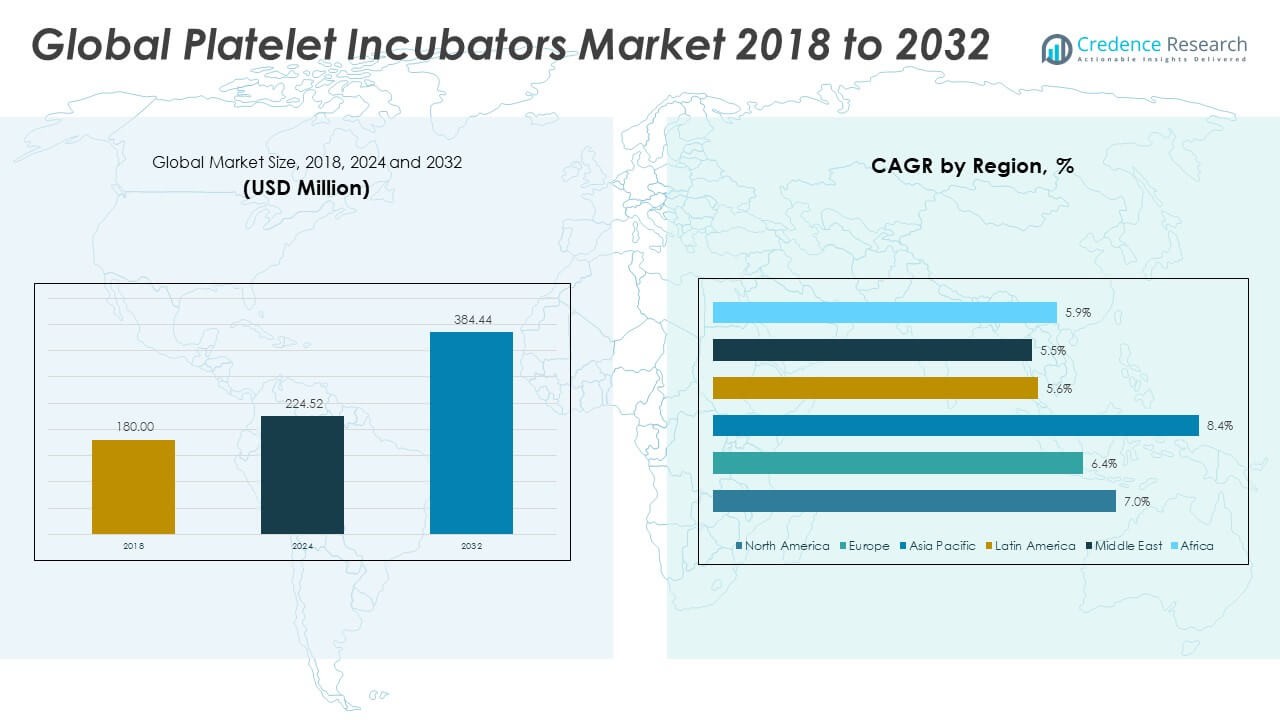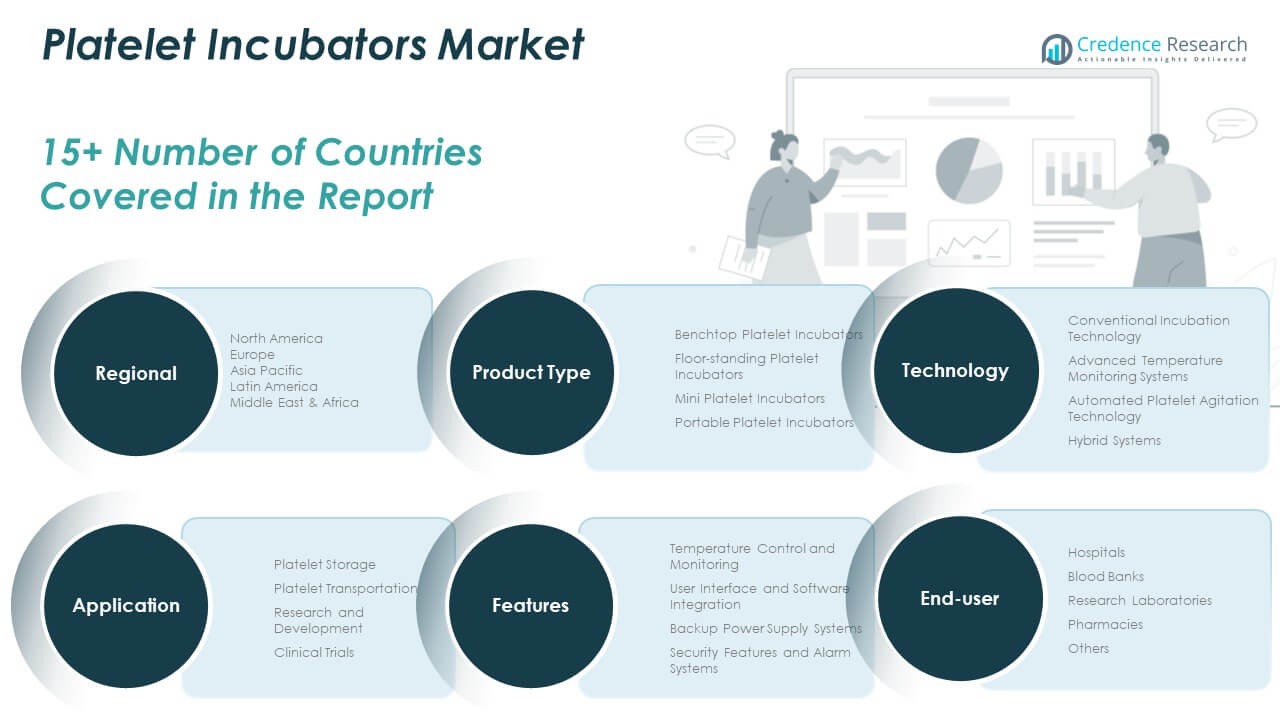CHAPTER NO. 1 : GENESIS OF THE MARKET
1.1 Market Prelude – Introduction & Scope
1.2 The Big Picture – Objectives & Vision
1.3 Strategic Edge – Unique Value Proposition
1.4 Stakeholder Compass – Key Beneficiaries
CHAPTER NO. 2 : EXECUTIVE LENS
2.1 Pulse of the Industry – Market Snapshot
2.2 Growth Arc – Revenue Projections (USD Million)
2.3. Premium Insights – Based on Primary Interviews
CHAPTER NO. 3 : PLATELET INCUBATORS MARKET FORCES & INDUSTRY PULSE
3.1 Foundations of Change – Market Overview
3.2 Catalysts of Expansion – Key Market Drivers
3.2.1 Momentum Boosters – Growth Triggers
3.2.2 Innovation Fuel – Disruptive Technologies
3.3 Headwinds & Crosswinds – Market Restraints
3.3.1 Regulatory Tides – Compliance Challenges
3.3.2 Economic Frictions – Inflationary Pressures
3.4 Untapped Horizons – Growth Potential & Opportunities
3.5 Strategic Navigation – Industry Frameworks
3.5.1 Market Equilibrium – Porter’s Five Forces
3.5.2 Ecosystem Dynamics – Value Chain Analysis
3.5.3 Macro Forces – PESTEL Breakdown
3.6 Price Trend Analysis
3.6.1 Regional Price Trend
3.6.2 Price Trend by product
CHAPTER NO. 4 : KEY INVESTMENT EPICENTER
4.1 Regional Goldmines – High-Growth Geographies
4.2 End-user Frontiers – Lucrative End-user Categories
4.3 Technology Sweet Spots – Emerging Demand Segments
CHAPTER NO. 5: REVENUE TRAJECTORY & WEALTH MAPPING
5.1 Momentum Metrics – Forecast & Growth Curves
5.2 Regional Revenue Footprint – Market Share Insights
5.3 Segmental Wealth Flow – Product Type & Technology Revenue
CHAPTER NO. 6 : TRADE & COMMERCE ANALYSIS
6.1. Import Analysis by Region
6.1.1. Global Platelet Incubators Market Import Revenue By Region
6.2. Export Analysis by Region
6.2.1. Global Platelet Incubators Market Export Revenue By Region
CHAPTER NO. 7 : COMPETITION ANALYSIS
7.1. Company Market Share Analysis
7.1.1. Global Platelet Incubators Market: Company Market Share
7.2. Global Platelet Incubators Market Company Revenue Market Share
7.3. Strategic Developments
7.3.1. Acquisitions & Mergers
7.3.2. New End-user Launch
7.3.3. Regional Expansion
7.4. Competitive Dashboard
7.5. Company Assessment Metrics, 2024
CHAPTER NO. 8 : PLATELET INCUBATORS MARKET – BY PRODUCT TYPE SEGMENT ANALYSIS
8.1. Platelet Incubators Market Overview by Product Type Segment
8.1.1. Platelet Incubators Market Revenue Share By Product Type
8.2. Benchtop Platelet Incubators
8.3. Floor-standing Platelet Incubators
8.4. Mini Platelet Incubators
8.5. Portable Platelet Incubators
CHAPTER NO. 9 : PLATELET INCUBATORS MARKET – BY TECHNOLOGY SEGMENT ANALYSIS
9.1. Platelet Incubators Market Overview by Technology Segment
9.1.1. Platelet Incubators Market Revenue Share By Technology
9.2. Conventional Incubation Technology
9.3. Advanced Temperature Monitoring Systems
9.4. Automated Platelet Agitation Technology
9.5. Hybrid Systems
CHAPTER NO. 10 : PLATELET INCUBATORS MARKET – BY END-USER SEGMENT ANALYSIS
10.1. Platelet Incubators Market Overview by End-user Segment
10.1.1. Platelet Incubators Market Revenue Share By End-user
10.2. Hospitals
10.3. Blood Banks
10.4. Research Laboratories
10.5. Pharmacies
10.6. Others
CHAPTER NO. 11 : PLATELET INCUBATORS MARKET – BY APPLICATION SEGMENT ANALYSIS
11.1. Platelet Incubators Market Overview by Application Segment
11.1.1. Platelet Incubators Market Revenue Share By Application
11.2. Platelet Storage
11.3. Platelet Transportation
11.4. Research and Development
11.5. Clinical Trials
CHAPTER NO. 12 : PLATELET INCUBATORS MARKET – BY FEATURES SEGMENT ANALYSIS
12.1. Platelet Incubators Market Overview by Features Segment
12.1.1. Platelet Incubators Market Revenue Share By Features
12.2. Temperature Control and Monitoring
12.3. User Interface and Software Integration
12.4. Backup Power Supply Systems
12.5. Security Features and Alarm Systems
CHAPTER NO. 13 : PLATELET INCUBATORS MARKET – REGIONAL ANALYSIS
13.1. Platelet Incubators Market Overview by Region Segment
13.1.1. Global Platelet Incubators Market Revenue Share By Region
13.1.2. Regions
13.1.3. Global Platelet Incubators Market Revenue By Region
13.1.4. Product Type
13.1.5. Global Platelet Incubators Market Revenue By Product Type
13.1.6. Technology
13.1.7. Global Platelet Incubators Market Revenue By Technology
13.1.8. End-user
13.1.9. Global Platelet Incubators Market Revenue By End-user
13.1.10. Application
13.1.12. Global Platelet Incubators Market Revenue By Application
13.1.13. Features
13.1.14. Global Platelet Incubators Market Revenue By Features
CHAPTER NO. 14 : NORTH AMERICA PLATELET INCUBATORS MARKET – COUNTRY ANALYSIS
14.1. North America Platelet Incubators Market Overview by Country Segment
14.1.1. North America Platelet Incubators Market Revenue Share By Region
14.2. North America
14.2.1. North America Platelet Incubators Market Revenue By Country
14.2.2. Product Type
14.2.3. North America Platelet Incubators Market Revenue By Product Type
14.2.4. Technology
14.2.5. North America Platelet Incubators Market Revenue By Technology
14.2.6. End-user
14.2.7. North America Platelet Incubators Market Revenue By End-user
14.2.8. Application
14.2.9. North America Platelet Incubators Market Revenue By Application
14.2.10. Features
14.2.11. North America Platelet Incubators Market Revenue By Features
14.3. U.S.
14.4. Canada
14.5. Mexico
CHAPTER NO. 15 : EUROPE PLATELET INCUBATORS MARKET – COUNTRY ANALYSIS
15.1. Europe Platelet Incubators Market Overview by Country Segment
15.1.1. Europe Platelet Incubators Market Revenue Share By Region
15.2. Europe
15.2.1. Europe Platelet Incubators Market Revenue By Country
15.2.2. Product Type
15.2.3. Europe Platelet Incubators Market Revenue By Product Type
15.2.4. Technology
15.2.5. Europe Platelet Incubators Market Revenue By Technology
15.2.6. End-user
15.2.7. Europe Platelet Incubators Market Revenue By End-user
15.2.8. Application
15.2.9. Europe Platelet Incubators Market Revenue By Application
15.2.10. Features
15.2.11. Europe Platelet Incubators Market Revenue By Features
15.3. UK
15.4. France
15.5. Germany
15.6. Italy
15.7. Spain
15.8. Russia
15.9. Rest of Europe
CHAPTER NO. 16 : ASIA PACIFIC PLATELET INCUBATORS MARKET – COUNTRY ANALYSIS
16.1. Asia Pacific Platelet Incubators Market Overview by Country Segment
16.1.1.Asia Pacific Platelet Incubators Market Revenue Share By Region
16.2. Asia Pacific
16.2.1. Asia Pacific Platelet Incubators Market Revenue By Country
16.2.2. Product Type
16.2.3.Asia Pacific Platelet Incubators Market Revenue By Product Type
16.2.4. Technology
16.2.5. Asia Pacific Platelet Incubators Market Revenue By Technology
16.2.6. End-user
16.2.7. Asia Pacific Platelet Incubators Market Revenue By End-user
16.2.8. Application
16.2.9. Asia Pacific Platelet Incubators Market Revenue By Application
16.2.10. Features
16.2.11. Asia Pacific Platelet Incubators Market Revenue By Features
16.3. China
16.4. Japan
16.5. South Korea
16.6. India
16.7. Australia
16.8. Southeast Asia
16.9. Rest of Asia Pacific
CHAPTER NO. 17 : LATIN AMERICA PLATELET INCUBATORS MARKET – COUNTRY ANALYSIS
17.1. Latin America Platelet Incubators Market Overview by Country Segment
17.1.1. Latin America Platelet Incubators Market Revenue Share By Region
17.2. Latin America
17.2.1. Latin America Platelet Incubators Market Revenue By Country
17.2.2. Product Type
17.2.3. Latin America Platelet Incubators Market Revenue By Product Type
17.2.4. Technology
17.2.5. Latin America Platelet Incubators Market Revenue By Technology
17.2.6. End-user
17.2.7. Latin America Platelet Incubators Market Revenue By End-user
17.2.8. Application
17.2.9. Latin America Platelet Incubators Market Revenue By Application
17.2.10. Features
17.2.11. Latin America Platelet Incubators Market Revenue By Features
17.3. Brazil
17.4. Argentina
17.5. Rest of Latin America
CHAPTER NO. 18 : MIDDLE EAST PLATELET INCUBATORS MARKET – COUNTRY ANALYSIS
18.1. Middle East Platelet Incubators Market Overview by Country Segment
18.1.1.Middle East Platelet Incubators Market Revenue Share By Region
18.2. Middle East
18.2.1. Middle East Platelet Incubators Market Revenue By Country
18.2.2. Product Type
18.2.3.Middle East Platelet Incubators Market Revenue By Product Type
18.2.4. Technology
18.2.5. Middle East Platelet Incubators Market Revenue By Technology
18.2.6. End-user
18.2.7. Middle East Platelet Incubators Market Revenue By End-user
18.2.8. Application
18.2.9. Middle East Platelet Incubators Market Revenue By Application
18.2.10. Features
18.2.11. Middle East Platelet Incubators Market Revenue By Features
18.3. GCC Countries
18.4. Israel
18.5. Turkey
18.6. Rest of Middle East
CHAPTER NO. 19 : AFRICA PLATELET INCUBATORS MARKET – COUNTRY ANALYSIS
19.1. Africa Platelet Incubators Market Overview by Country Segment
19.1.1. Africa Platelet Incubators Market Revenue Share By Region
19.2. Africa
19.2.1. Africa Platelet Incubators Market Revenue By Country
19.2.2. Product Type
19.2.3. Africa Platelet Incubators Market Revenue By Product Type
19.2.4. Technology
19.2.5. Africa Platelet Incubators Market Revenue By Technology
19.2.6. End-user
19.2.7. Africa Platelet Incubators Market Revenue By End-user
19.2.8. Application
19.2.9. Africa Platelet Incubators Market Revenue By Application
19.2.10. Features
19.2.11. Africa Platelet Incubators Market Revenue By Features
19.3. South Africa
19.4. Egypt
19.5. Rest of Africa
CHAPTER NO. 20 : COMPANY PROFILES
20.1. Helmer Scientific
20.1.1. Company Overview
20.1.2. Product Portfolio
20.1.3. Financial Overview
20.1.4.Recent Developments
20.1.5. Growth Strategy
20.1.6. SWOT Analysis
20.2. Terumo Penpol
20.3. Boekel Scientific
20.4. SARSTEDT AG & Co.
20.5. Lmb Technologie GmbH
20.6. Biolab Scientific
20.7. Skylab Instruments & Engineering
20.8. Labcold









